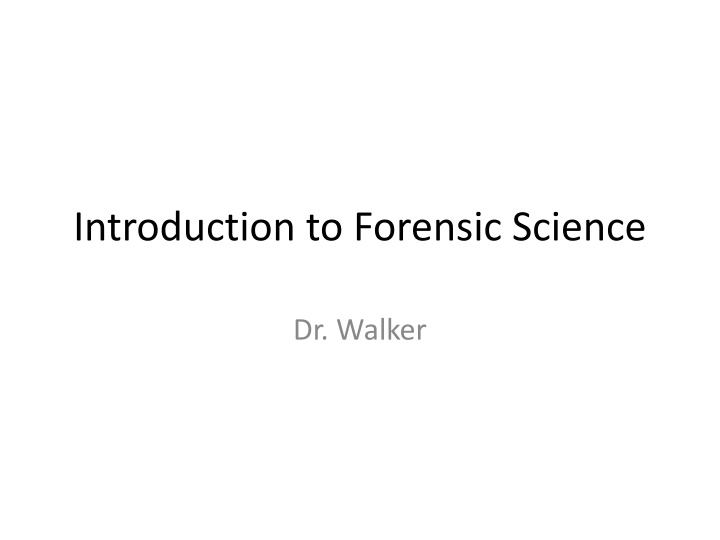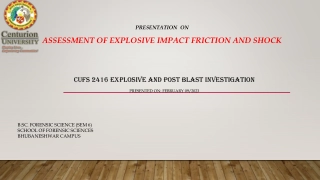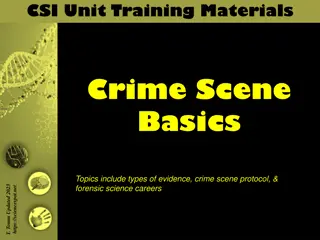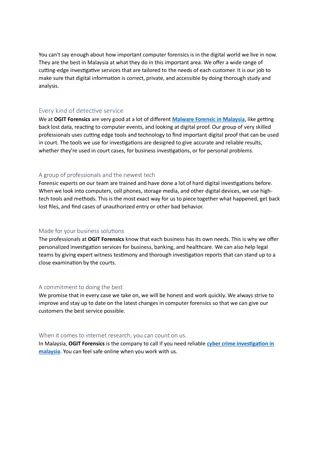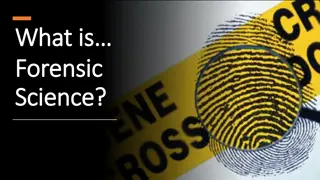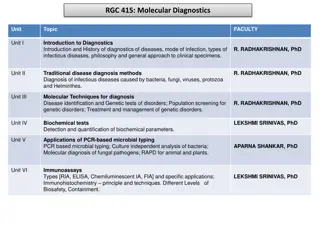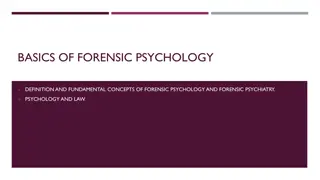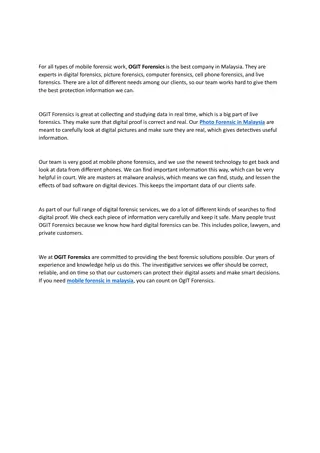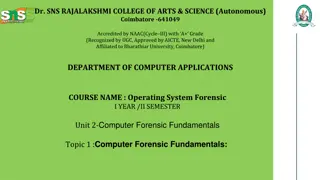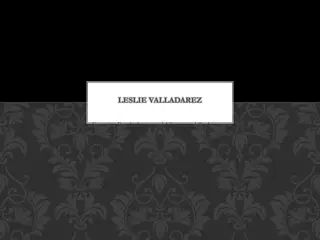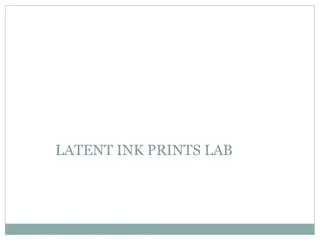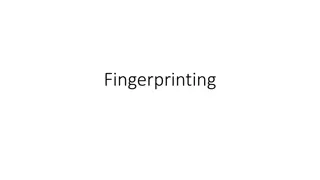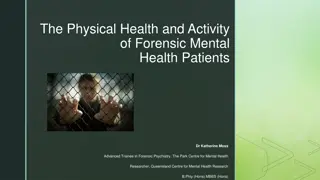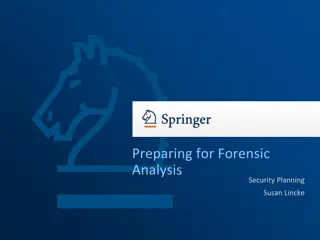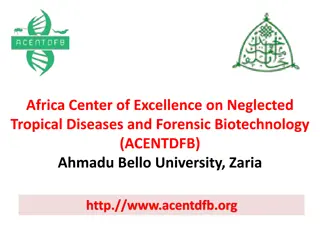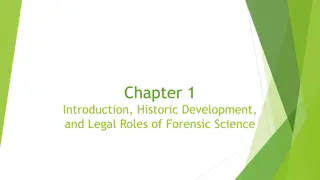Introduction to Forensic Science
Forensic science, the application of scientific principles to legal matters, has a rich history dating back to ancient civilizations. From fingerprint analysis in China to DNA profiling in modern investigations, this forensic field has played a crucial role in solving crimes. Explore the evolution of forensic techniques and the collaboration between lawyers and scientists to ensure justice is served.
Download Presentation

Please find below an Image/Link to download the presentation.
The content on the website is provided AS IS for your information and personal use only. It may not be sold, licensed, or shared on other websites without obtaining consent from the author.If you encounter any issues during the download, it is possible that the publisher has removed the file from their server.
You are allowed to download the files provided on this website for personal or commercial use, subject to the condition that they are used lawfully. All files are the property of their respective owners.
The content on the website is provided AS IS for your information and personal use only. It may not be sold, licensed, or shared on other websites without obtaining consent from the author.
E N D
Presentation Transcript
Introduction to Forensic Science Dr. Walker
Write all What is Forensic Science? The application of the laws of nature to the laws of man. Using science to enforce the law
Write bold A little history . 8th Century B.C. - Chinese used fingerprints to establish identity of authors and artists 1248 A.D. - First recorded application of medical knowledge to the solution of crime. The book, Hsi Duan Yu (the washing away of wrongs), contains a description of how to distinguish drowning from strangulation. 1447 First use of odontology (dental records) The missing teeth of the French Duke of Burgundy are used to identify remains. 1835- First use of bullet comparisons Henry Goddard His comparison was based on a visible flaw in the bullet which was traced back to a mold
Write bold A little history . 1836 First use of toxicology in a jury trial James Marsh Arsenic detection poison du jour of the 19th century 1839 First attempt to determine time since death using body temperature John Davy recounts experiments with dead soldiers using a mercury thermometer. 1863 - First presumptive test for blood Christian Schonbein uses hydrogen peroxide, which reacts with hemoglobin in blood
Write bold A little history 1889 First attempt at ballistics Alexandre Lacassagne attempts to individualize bullets to a gun barrel, based on the number of lands and grooves 1896 - Sir Edward Richard Henry develops the print classification system that would later be used in Europe and North America. 1901 Karl Landsteiner discovers human blood groups (A, B, AB, O).
Write bold A little history 1905 US president Theodore Roosevelt establishes the Federal Bureau of Investigation (FBI) 1910 Edmond Locard (known as the father of forensic science ) establishes the first police crime laboratory in Lyon, France 1932 - FBI crime lab started 1986 DNA is used for the first time to solve a crime. Sir Alec Jeffreys uses DNA profiling to identify Colin Pitchfork as the murderer of two young girls in the English Midlands.
Lawyers and Scientists Are all scientists lawyers? Are all lawyers scientists? How should they work together? What is the effect of poor communication between lawyers and scientists?
Write bold How we know what to use? Science is proven through repetition of experiments and peer review Fraudulent Science is inevitable judges and jurors need a system to muck through it all! View forensics on trial video: http://video.pbs.org/video/2223977258/
Write bold Forensic Experts An expert is someone the court recognizes as being competent in their relevant field. What is the expert s role? Oversee proper processing and analysis of evidence Communicate findings to police and prosecutors Communicate findings to jury/judge at trial
Write all Forensic Experts Pathologist performs autopsies Toxicologist looks for poisons in blood Anthropologist looks at bones Entomologist insects Odontologist forensic dentists Each has completed training specific to their discipline
Write all Standards of Expert Testimony Frye Standard People in a particular field determine who is qualified as an expert. Daubert Standard Qualifications are presented to the judge/jury to determine if a witness is qualified as an expert. Different states use different standards
Write bold Federal Rules of Evidence (FRE) Rule 702. Testimony by Expert Witnesses A witness who is qualified as an expert by knowledge, skill, experience, training, or education may testify in the form of an opinion or otherwise if: (a) the expert s scientific, technical, or other specialized knowledge will help the trier of fact to understand the evidence or to determine a fact in issue; (b) the testimony is based on sufficient facts or data; (c) the testimony is the product of reliable principles and methods; and (d) the expert has reliably applied the principles and methods to the facts of the case More permissive than Frye or Daubert Virginia uses a form of FRE 702, NOT Frye or Daubert http://www.law.cornell.edu/rules/fre/rule_702
Write bold Ethics in Expert Testimony Ipse Dixit Translated from latin = he himself said it Unsupported assertion by expert witness Expert witness straying outside of area of expertise
Examples of Ipse Dixit Commonwealth v. Henry, 569 A.2d 929 ( Pa. 1990) (prosecution s odontologists testified that bite mark was sadistically inflicted) Fisher v. State, 361 So.2d 203, 204 (Fla. Dist. Ct. App. 1978) (prosecution s medical examiner testified that stab wounds were more characteristics of those made by a woman ) Commonwealth v. Graves , 456 A.2d 561, 565 ( Pa. Super. Ct. 1983) (prosecution s forensic odontologists testified that they were able to connect scratches on victim s back to defendant s fingernails) Desilvey v. State, 16 So.2d 183 (1944) (state s toxicologists testified he was able to determine the height and age of the victim)
Write bold More Ethics What happens if the prosecution withholds evidence? Disclosure Evidence MUST NOT BE WITHHELD IF: Favorable to accused Reasonable probability it would change outcome
Sources http://forensicsciencecentral.co.uk/history.sht ml
